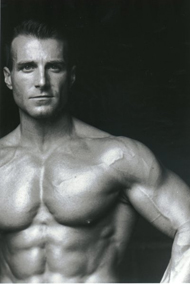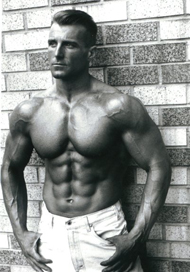Title: The Doctor Says, “Aerobics Will Kill You!”
By line: By Tom Venuto
URL: www.BurnTheFat.com!
Word count: 1492 words

I recently got an email from a reader who was told by a fairly prominent doctor/authorthat aerobics and running will “kill you” (that was more or less the gist of it). As a result, you should avoid aerobics like the plague, says this MD. Since I’ve tolerated enough “steady state cardio is dead” and “aerobics doesn’t work” nonsense over the last few years, despite the success stories I keep churning out that clearly show otherwise, (not to mention my own bodybuilding success, which includes regular cardio), I thought I should not only answer my reader, but also make this topic into an article for anyone else who may have doubts.
Here’s the “killer cardio” question and my response:
——————————————————————————————
BURN THE FAT READER EMAIL:
——————————————————————————————
Tom, your articles are great. Here’s the problem. More runners die from sudden heart attack and stroke than any other form of exercise on the planet.
It’s because nothing is more foreign to human beings than getting their heart rate up and keeping it there for long periods of time.
Recent studies have shown that while there are benefits to aerobics, (like weight loss), in the long term, statistics show a direct increase in heart disease.
Part of the reason for this is that in an effort to adapt to the unnatural demands being put on the body, to economize, the heart and lungs actually shrink.
Just look at the long list of joint, bone, and muscle injuries that come along with running (it’s right there in the magazines).
As I know you know, a serious weight lifter, if he’s paying attention to form, should almost never suffer injury from weight training. The same is true for the following:
Instead of unnatural, self-abusive aerobics, the best way to actually increase heart and lung capacity and size is to go beyond aerobics. In short, spurts of intense exercise, such as wind-sprints, you move past your ability to produce ATP with oxygen as fast as you are using it, causing your muscles to become ATP depleted.
That’s the point at which your anaerobic energy system kicks in. This is also known as crossing your aerobic threshold.
Burst training, sprints, whatever you want to call it, it shouldn’t be done in addition to aerobics, it should be done in place of aerobics.
Incidentally, I am not saying that one shouldn’t walk, jog, bicycle, swim, etc, just be reasonable.
I had a heart condition that has been totally alleviated. Monday, Tuesday, Thursday and Friday of each week, I go through a 45 minute weight training session, followed by a 20 minutes of the interval program.
Check it out, I think this sort of thing would be a great addition to your already good program.
-Jeff
————————————————- RESPONSE: ————————————————
While I agree with much of what you said about the benefits of intense “burst” exercise, I find the anti-running and anti-aerobics arguments promoted by these “experts” to be horribly inflexible, dogmatic and, unlike what you suggested, totally UNreasonable.
Based on the science, I also find the argument that traditional cardio or aerobics is “unhealthy” to be wholly unconvincing. That doctor isn’t giving the full picture.
I subscribe to many sports medicine and exercise science journals and I’ve certainly seen research papers looking at sudden death in elite runners, etc. But most of them were case studies and epidemiology. Believe me, there’s another side to the story.
Marathon running is a highly publicized sport, and the media loves bad news, so the oxymoron of a runner dying of a heart attack makes a great story, which means greater visibility for what is actually a very rare occurrence.
It’s also easy to cherry pick case studies on just about anything to start up a big scare.
This comes from the American Journal of Cardiology:
“The overall prevalence of sudden cardiac death during the marathon was only 0.002%, strikingly lower than for several other variables of risk for premature death calculated for the general U.S. population.”
Although highly trained athletes such as marathon runners may harbor underlying and potentially lethal cardiovascular disease, the risk for sudden cardiac death associated with such intense physical effort was exceedingly small.”
I also find comparing serious endurance athletes pushing their physical limits to regular cardio for general fitness training to be an inappropriate comparison.
What does a rare cardiac event during a 26 mile run have to do with you doing 30 or 45 minutes of jogging or me doing 40 minutes of moderate work on the stairmaster to get cut for a bodybuilding contest?
Even sillier are the people who keep using the late marathon runner and running author Jim Fixx as an example of anything but a guy who had a genetic predisposition for heart disease (gun was loaded). Rumor has it he was a long time smoker, too.
I know some bodybuilders and weight lifters who died of heart attacks in the gym. Should we argue against against weight lifting too? Should we just play it safe and stay on the couch? Freak incidents happen and heredity is a factor.
Please note, I’m saying all this as a strength/physique athlete (bodybuilder), who understands full well that excessive aerobics is counterproductive to my goals and that weight training is priority #1.
But in the right amounts, balanced with proper recovery (as you said, “reasonable”) regular cardio can be instrumental in helping me lower my body fat and it can benefit you in many other ways, physically and mentally.
There are MANY ways to do cardio and all of them have their place at certain times for certain people.
What you’re talking about with sprints or burst training is also known as High Intensity Interval Training or HIIT for short.
HIIT can be a great way to get cardiovascular conditioning and burn a lot of calories in a very time efficient manner.
Furthermore, a paper just published recently in the ACSM’s Exercise and Sport Sciences Review (July 2009) discussed the research suggesting that intense aerobic interval training provides greater benefits for the heart than low or moderate intensity exercise.
The benefits discussed included:
- Increased maximal oxygen uptake
- Improved heart muscle contractile function
- Improved heart muscle calcium handling
- reduced cardiac dysfunction in metabolic syndrome
- Reversed pathological cardiac hypertrophy
- Increased physiological hypertrophy of the heart muscle
- Overall improved quality of life and length of life by avoiding fatal heart attacks.
This is NOT an argument AGAINST regular cardio, it is evidence in favor of intense cardio.
I like HIIT and intense types of cardio! I don’t need to add it to my program because it’s already a part of it.
My first book about fat loss, BurnTheFat Feed The Muscle was first published in 2002 and I recommended HIIT way back then – as well as regular cardio, not one or the other. I Still do!
There were also people promoting HIIT long before me. It’s not any revolutionary idea – people just keep putting new names and spins on it for marketing purposes.
The problem is, to argue in favor of HIIT should not be construed as arguing against conventional cardio or aerobics.
Many of the world’s best bodybuilders and fitness models used slow, steady state cardio exclusively prior to competitions and they got ripped right down to the six pack abs. They didn’t die of a heart attack and they didn’t lose muscle either.
In fact, many bodybuilders opt for low intensity cardio specifically for muscle retention when they get to the tail end of contest prep where body fat stores are getting low and food intake is low. Adding more high intensity training on top of all the weight training is often catabolic in that caloric deficit situation.
Listen, HIIT and other types of intense cardio are great. It’s time efficient, making it ideal for the busy person, and its very effective for both fat loss and cardiovascular conditioning. It’s also more engaging, as many people find longer, slower sessions of cardio boring.
If you have a history of heart disease and you smoke like a chimney and at the same time you decide you want to take up marathon running, ok, I’ll concede to some caution.
But, “Aerobics is going to kill you!”??????
GIVE ME A BREAK!
Perfect marketing hook for a cultish “HIIT is the only way” type of program… little more.
Bottom line: sure, do your HIIT, do your sprints, do your Tabatas….
OR…
Do your regular steady state aerobics or running too…
Or, do a little bit of everything like I do!
Be sure weight training is your foremost training priority and then do whatever type of cardio you enjoy and whatever type gets you the best results.
If you like to run, then RUN, and tell the “experts” who say otherwise to BUZZ OFF and take their sensationalistic journalism and marketing with them!
Train hard and expect success!
Tom Venuto, author of Burn The Fat Feed The Muscle
Founder & CEO of Burn The Fat Inner Circle at www.BurnTheFat.com!
About the Author:
Tom Venuto is the author of the #1 best seller, Burn the Fat, Feed the Muscle: Fat  Burning Secrets of the World’s Best Bodybuilders and Fitness Models. Tom is a lifetime natural bodybuilder and fat loss expert who achieved an astonishing 3.7% body fat level without drugs or supplements. Discover how to increase your metabolism and burn stubborn body fat, find out which foods burn fat and which foods turn to fat, plus get a free fat loss report and mini course by visiting Tom’s site at: www.BurnTheFat.com!
Burning Secrets of the World’s Best Bodybuilders and Fitness Models. Tom is a lifetime natural bodybuilder and fat loss expert who achieved an astonishing 3.7% body fat level without drugs or supplements. Discover how to increase your metabolism and burn stubborn body fat, find out which foods burn fat and which foods turn to fat, plus get a free fat loss report and mini course by visiting Tom’s site at: www.BurnTheFat.com!
















